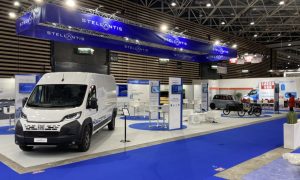Tesla CEO Elon Musk took to Twitter Wednesday morning to confirm the release of the company’s highly anticipated upgrade to its Autopilot suite of features.
Though V8.0 of Autopilot will see a worldwide rollout via an over-the-air update into Model S and Model X vehicles, Musk indicated that it will be a gradual process to account for any bugs that may be introduced that may break previously working features. This is what he refers to as “regressions”, or in software speak, regression testing.
V8.0 starts downloading tonight. Release will be gradual to make sure there aren't small regressions. Many car configs, many environments.
— Elon Musk (@elonmusk) September 21, 2016
V8.0 will be arguably Tesla’s most significant Autopilot upgrade since its October 2014 initial release. Musk said on Twitter that “This is a major overhaul on almost every level compared to V7.” and dropped hints at what’s to come. To many Tesla owner’s delight, the new update will include what the owner’s community referred to as “Camping Mode” – a feature that allows the vehicle’s climate control system to remain always on while parked and support those that want to “camp” (sleep) in the car.
Can be turned on or off. V8.1 will allow always-on min and max temps to be set.
— Elon Musk (@elonmusk) September 21, 2016
The current generation of Autopilot relied heavily on the Model S and Model X front-facing camera while the vehicle’s onboard radar acted more as a supplementary sensor. With Version 8.0, Tesla has placed the primary emphasis on its radar. The upgraded version of Autopilot will leverage radar technology to create a virtual picture of the vehicle’s surroundings. Combined with data from Tesla’s fleet learning program, Tesla vehicles will be able to more reliably detect false positives such as overhead road signs and overpasses in line of sight that the current generation of Autopilot may otherwise detect as obstacles. Through the use of what Tesla describes as a geocoded whitelist, Autopilot’s suite of features will operate with a higher degree of confidence and theoretically be able to handle emergency braking situations with more precision.











